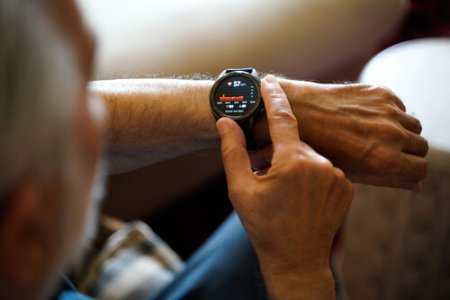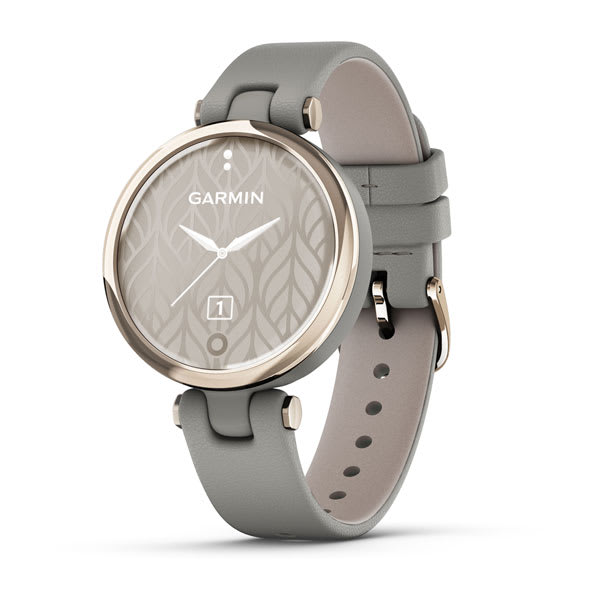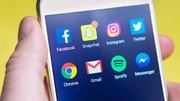Tech Talk with Dr Al: Smart Watches – Narrow the Choices
- Replies 3
Note from the Editor:
This article was kindly written for the SDC by member Alan G, ‘The Tech Guy’.
Considering investing in a smartwatch? This article can help narrow down the choices!
Why do you need a Smart Watch?
Apart from telling the time very accurately and that the time shown on the watch changes automatically when travelling interstate or overseas (via Bluetooth connection to a smartphone), there are many features crammed into these amazing devices.
The price you pay isn’t always dictated by the predominance of features, though. I have listed the most common.
Fall Detection and Alarm:
As seniors, we might have noticed our physical balance has gradually deteriorated over the years, or it might have come as a shock when you decided to begin Tai Chi or Yoga exercises. In either case, it does appear that some sort of ‘fall detection’ device might be useful. We hear a lot about people who were ‘quite well’ until they had a ‘fall’, then it was a sort of ‘downhill slide’.
Watches with this capability will be able to call a preset number at the touch of the ‘SOS’ button – a great idea!
Blood Pressure measurement and monitoring:
Traditional BP measurement is carried out using a sphygmomanometer. A cuff around your arm cuts off blood flow in the artery inside your elbow. As the cuff is loosened, the ‘whoosh’ of blood starting to flow again provides the systolic reading. When the noise stops, that's the diastolic number. The ‘systolic’ measurement is, therefore, the high number, and the ‘diastolic’ the low number.
Smartwatches use sensors and algorithms to measure blood pressure. The sensors detect the changes in blood volume in the arteries of the wrist and convert it into an electrical signal. The signal is then processed by the algorithm to calculate blood pressure. The measurements are displayed on the smartwatch screen. The way it works is by the watch sensors measuring the ‘pressure wave’ when the heart pumps. Changes in this reading are converted to a blood pressure measurement. ‘
Accurate or not, this is a very convenient way to monitor blood pressure and far less invasive than the uncomfortable cuff. It should be noted that some (cheaper) smartwatches are not as accurate as others in this regard.
Normal features to expect:
Heart rate; Step counting; Blood/Oxygen level:
A blood/oxygen reading can determine whether someone needs a ventilator to assist them in breathing, whether they can keep up with intensive physical activities, or whether they have breathing issues while sleeping. Due to most of those reasons, smartwatches with this feature offer far more convenience.
Temperature; Flashlight; Alarm clock; Camera:
Either built-in to the watch or a remote control of your smartphone camera.
Bluetooth; GPS; Wi-Fi; LBS (Location-Based Services):
These last three features are helpful to find the watch and/or the person wearing it. It’s a good safety feature. If the watch has a built-in GPS feature, your ‘paired’ phone app will show you where you’ve been during the day or simply track a particular walk that you’ve carried out. The calories you’ve consumed during exercise are shown generally on the watch and on the accompanying smartphone app.
Magnetic battery charging is standard these days – a charging socket on a watch takes up too much precious space. You may want to think about getting a watch with an OLED screen – brighter, with lower power consumption. My own (‘ZeBlaze Beyond’) watch will generally last the whole week before I need to charge it. You really don’t need to worry too much about screen protectors. Even low-priced smartwatches are being produced with ‘gorilla-glass’ screens.
Connection to a smartphone:
This is made possible by the Bluetooth pairing with your smartphone. It allows you to keep a record of your activity. The watch generally arrives with the packaging displaying a QR code that you can simply scan to install the accompanying app. If not, you’re directed to the Google Play store (for Android phones) or the Apple store. The app also allows you to enter your personal details (height, weight, etc.) to accurately convert your steps to kilometres and calories, change the watch face and so on. My watch was around $100 and notifies me (by vibration) of telephone calls as well as other alerts, such as Facebook notifications, messages and emails. This is quite handy in a noisy shopping centre.
Straps:
It might sound trivial, but a comfortable watch strap is essential, especially if you hope to use your watch to include sleep monitoring. The steel ‘flex’ strap seems a good idea, especially if you can get hold of a magnetic catch type. You will need to make sure that if you do like the watch you’ve purchased but not the strap, that any replacement will actually fit your watch. Modern straps are easily replaceable and probably slightly more so if the watch is rectangular.
Cost:
There is a higher price to pay for the ‘Fall detection’ watches – around $170 from Amazon, who have a number of watches in this category, for instance. I really think that’s not a lot to pay for, potentially saving your life. Check out ‘B098SNKMKV’ for $147.69 or ’B0C821KNTH’ for $206 from Amazon, the Spacetalk Life Seniors Smart Watch from Officeworks for $397, Apple Watch 7, Fitbit Sense, Garmin Vivoactive or Samsung Galaxy Watch 3 all have Fall Detection, but the price is a lot higher. I can’t see the value in watches costing over $500 that don’t seem to have many of the features included in these new smartwatches from China via Amazon.
If you’re really not bothered with some of the more sophisticated features, such as fall detection or GPS, there are plenty of really good smart/fitness watches for around the $30 - $50 mark.
About the author: Having spent three years living in Australia in his youth, Alan returned to Australia in 1969 with his wife and young child. Holding a Bachelor of Engineering degree and a Doctor of Science Education degree, Alan has experience in flight simulations, Einsteinian physics, and inventing an ‘eye blink’ device that allows cerebral palsy patients to communicate. He even took a turn at acting, starring in a TV advert and landing supporting and lead roles in his local dramatic society plays. His short stories have been published in WA’s The Gingin Buzz for ten years, and his novel The Magic Hourglass is a work in progress. He and his wife have a lovely life in Brisbane and regularly visit their two children in Sydney’s West. You can read Alan’s full-length bio here.
From the Editor:
Are you considering a smartwatch? Or maybe you already own one? What are the top features for you? I used to have an Apple watch and loved the gentle wake up option (vibration on your arm rather than a sound alarm).
We were only able to create this content because of the financial support of SDC Rewards members. If you'd like to see more of this (and a lot fewer ads!), please consider supporting us and signing up for SDC Rewards today—it starts at just $5.99 per month.
This article was kindly written for the SDC by member Alan G, ‘The Tech Guy’.
Considering investing in a smartwatch? This article can help narrow down the choices!
Why do you need a Smart Watch?
Apart from telling the time very accurately and that the time shown on the watch changes automatically when travelling interstate or overseas (via Bluetooth connection to a smartphone), there are many features crammed into these amazing devices.
The price you pay isn’t always dictated by the predominance of features, though. I have listed the most common.
Fall Detection and Alarm:
As seniors, we might have noticed our physical balance has gradually deteriorated over the years, or it might have come as a shock when you decided to begin Tai Chi or Yoga exercises. In either case, it does appear that some sort of ‘fall detection’ device might be useful. We hear a lot about people who were ‘quite well’ until they had a ‘fall’, then it was a sort of ‘downhill slide’.
Watches with this capability will be able to call a preset number at the touch of the ‘SOS’ button – a great idea!
Blood Pressure measurement and monitoring:
Traditional BP measurement is carried out using a sphygmomanometer. A cuff around your arm cuts off blood flow in the artery inside your elbow. As the cuff is loosened, the ‘whoosh’ of blood starting to flow again provides the systolic reading. When the noise stops, that's the diastolic number. The ‘systolic’ measurement is, therefore, the high number, and the ‘diastolic’ the low number.
Smartwatches use sensors and algorithms to measure blood pressure. The sensors detect the changes in blood volume in the arteries of the wrist and convert it into an electrical signal. The signal is then processed by the algorithm to calculate blood pressure. The measurements are displayed on the smartwatch screen. The way it works is by the watch sensors measuring the ‘pressure wave’ when the heart pumps. Changes in this reading are converted to a blood pressure measurement. ‘
Accurate or not, this is a very convenient way to monitor blood pressure and far less invasive than the uncomfortable cuff. It should be noted that some (cheaper) smartwatches are not as accurate as others in this regard.
Normal features to expect:
Heart rate; Step counting; Blood/Oxygen level:
A blood/oxygen reading can determine whether someone needs a ventilator to assist them in breathing, whether they can keep up with intensive physical activities, or whether they have breathing issues while sleeping. Due to most of those reasons, smartwatches with this feature offer far more convenience.
Temperature; Flashlight; Alarm clock; Camera:
Either built-in to the watch or a remote control of your smartphone camera.
Bluetooth; GPS; Wi-Fi; LBS (Location-Based Services):
These last three features are helpful to find the watch and/or the person wearing it. It’s a good safety feature. If the watch has a built-in GPS feature, your ‘paired’ phone app will show you where you’ve been during the day or simply track a particular walk that you’ve carried out. The calories you’ve consumed during exercise are shown generally on the watch and on the accompanying smartphone app.
Magnetic battery charging is standard these days – a charging socket on a watch takes up too much precious space. You may want to think about getting a watch with an OLED screen – brighter, with lower power consumption. My own (‘ZeBlaze Beyond’) watch will generally last the whole week before I need to charge it. You really don’t need to worry too much about screen protectors. Even low-priced smartwatches are being produced with ‘gorilla-glass’ screens.
Connection to a smartphone:
This is made possible by the Bluetooth pairing with your smartphone. It allows you to keep a record of your activity. The watch generally arrives with the packaging displaying a QR code that you can simply scan to install the accompanying app. If not, you’re directed to the Google Play store (for Android phones) or the Apple store. The app also allows you to enter your personal details (height, weight, etc.) to accurately convert your steps to kilometres and calories, change the watch face and so on. My watch was around $100 and notifies me (by vibration) of telephone calls as well as other alerts, such as Facebook notifications, messages and emails. This is quite handy in a noisy shopping centre.
Straps:
It might sound trivial, but a comfortable watch strap is essential, especially if you hope to use your watch to include sleep monitoring. The steel ‘flex’ strap seems a good idea, especially if you can get hold of a magnetic catch type. You will need to make sure that if you do like the watch you’ve purchased but not the strap, that any replacement will actually fit your watch. Modern straps are easily replaceable and probably slightly more so if the watch is rectangular.
Cost:
There is a higher price to pay for the ‘Fall detection’ watches – around $170 from Amazon, who have a number of watches in this category, for instance. I really think that’s not a lot to pay for, potentially saving your life. Check out ‘B098SNKMKV’ for $147.69 or ’B0C821KNTH’ for $206 from Amazon, the Spacetalk Life Seniors Smart Watch from Officeworks for $397, Apple Watch 7, Fitbit Sense, Garmin Vivoactive or Samsung Galaxy Watch 3 all have Fall Detection, but the price is a lot higher. I can’t see the value in watches costing over $500 that don’t seem to have many of the features included in these new smartwatches from China via Amazon.
If you’re really not bothered with some of the more sophisticated features, such as fall detection or GPS, there are plenty of really good smart/fitness watches for around the $30 - $50 mark.
About the author: Having spent three years living in Australia in his youth, Alan returned to Australia in 1969 with his wife and young child. Holding a Bachelor of Engineering degree and a Doctor of Science Education degree, Alan has experience in flight simulations, Einsteinian physics, and inventing an ‘eye blink’ device that allows cerebral palsy patients to communicate. He even took a turn at acting, starring in a TV advert and landing supporting and lead roles in his local dramatic society plays. His short stories have been published in WA’s The Gingin Buzz for ten years, and his novel The Magic Hourglass is a work in progress. He and his wife have a lovely life in Brisbane and regularly visit their two children in Sydney’s West. You can read Alan’s full-length bio here.
From the Editor:
Are you considering a smartwatch? Or maybe you already own one? What are the top features for you? I used to have an Apple watch and loved the gentle wake up option (vibration on your arm rather than a sound alarm).
We were only able to create this content because of the financial support of SDC Rewards members. If you'd like to see more of this (and a lot fewer ads!), please consider supporting us and signing up for SDC Rewards today—it starts at just $5.99 per month.









